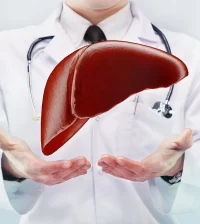- Federal Judge Halts Plan to Defund Planned Parenthood Through Medicaid
- The Gut-Healthy Secret Weapon Hiding in Your Sauerkraut
- Cowboys Guard Rob Jones Breaks Neck Bone, Out Up to 3 Months
- Words Used During Prenatal Ultrasound Might Affect Parenting Later
- Dementia Diagnosis Typically Comes 3.5 Years After Symptoms
- Is It Chronic Fatigue? Listen to Your Gut, Research Suggests
- Most Liver Cancers Are Preventable, Study Says
- Walking for Health? A Faster Pace Boosts Benefits
- Surrogate Moms More Apt To Suffer Mental Illness
- Patients With Diabetes More Likely to Experience Adverse Financial Outcomes
Many Antibiotics No Longer Work Against Common Childhood Infections

Many antibiotics long used to treat common childhood infections are no longer effective because of antibiotic resistance.
The authors of a new study say global guidelines on antibiotic use need to be updated to reflect this, and they called for an increased focus on developing new antibiotics for infants and children.
“We are not immune to this problem — the burden of antimicrobial resistance is on our doorstep,” said lead author Dr. Phoebe Williams, of the University of Sydney Infectious Diseases Institute in Australia.
“Antibiotic resistance is rising more rapidly than we realize,” she said in a university news release. “We urgently need new solutions to stop invasive multidrug-resistant infections and the needless deaths of thousands of children each year.”
Williams is an infectious disease specialist whose research focuses on reducing antimicrobial resistance in challenging Southeast Asia health care settings.
Researchers found that many antibiotics recommended by the World Health Organization (WHO) were less than 50% effective in treating childhood infections such as pneumonia, sepsis (bloodstream infections) and meningitis.
Areas in Southeast Asia and the Pacific are most seriously affected by this. That includes Indonesia and the Philippines, where thousands of children die each as a result of antibiotic-resistant infections.
The WHO considers antimicrobial resistance (AMR) a top 10 global public health threat.
Worldwide, about 3 million newborns get sepsis each year and 570,000 die, often due to lack of effective antibiotics to treat resistant bacteria.
WHO’s most recent global antibiotic guideline was published in 2013.
The new study found the antibiotic ceftriaxone was likely to be effective in only 1 of 3 cases of sepsis or meningitis in newborns. The antibiotic gentamicin was likely to be effective in fewer than half of sepsis and meningitis cases in children.
Gentamicin is commonly prescribed alongside aminopenicillins, which also had low effectiveness in fighting bloodstream infections in babies and children.
Researchers reviewed 86 studies that analyzed more than 6,600 bacterial species from 11 countries to gauge antibiotic susceptibility for common bacteria causing childhood infections.
Williams said funding to investigate new antibiotic treatments for children and newborns needs to be a priority.
“Antibiotic clinical focus on adults and too often children and newborns are left out. That means we have very limited options and data for new treatments,” Williams said.
She is currently looking into an old antibiotic, fosfomycin, as a temporary lifeline to treat multidrug-resistant urinary tract infections in children in Australia.
Williams is also working with the WHO’s Pediatric Drug Optimization Committee to ensure kids have access to antibiotics to treat drug-resistant infections as soon as possible and to reduce deaths from AMR.
“This study reveals important problems regarding the availability of effective antibiotics to treat serious infections in children,” said senior author Paul Turner, director of the Cambodia Oxford Medical Research Unit at Angkor Hospital for Children in Siem Reap, Cambodia.
“It also highlights the ongoing need for high quality laboratory data to monitor the AMR situation, which will facilitate timely changes to be made to treatment guidelines,” Turner said in the release.
Study findings were published Oct. 31 in The Lancet Regional Health – Southeast Asia.
More information
The U.S. Centers for Disease Control and Prevention has more on antibiotic resistance.
SOURCE: University of Sydney, news release, Oct. 31, 2023
Source: HealthDay
Copyright © 2025 HealthDay. All rights reserved.










